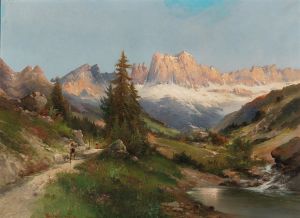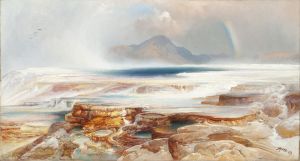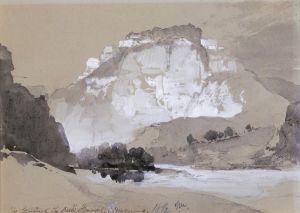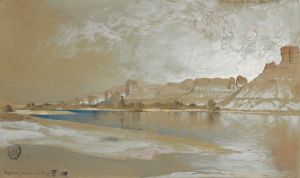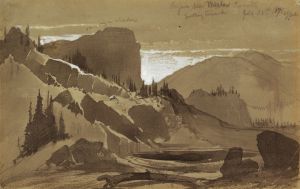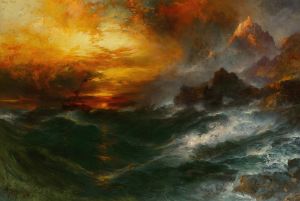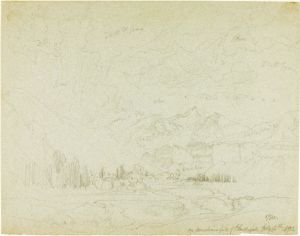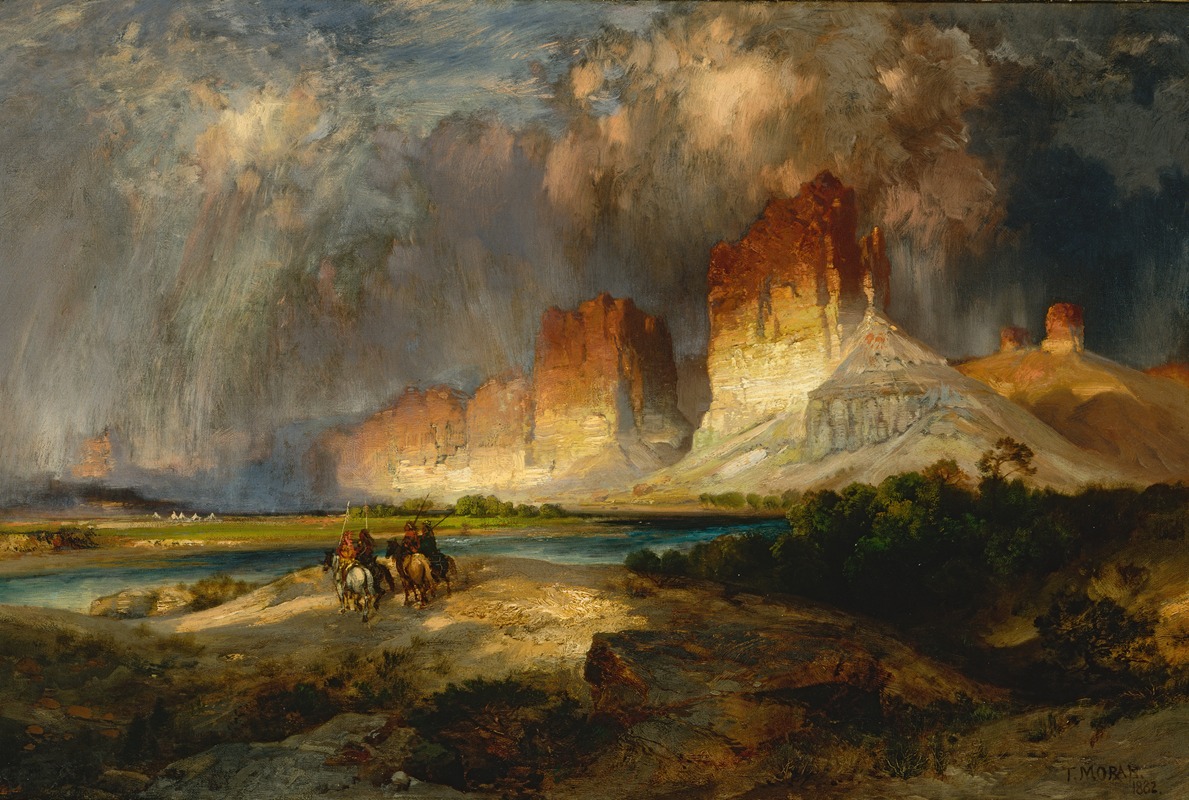
Cliffs Of The Upper Colorado River, Wyoming Territory
A hand-painted replica of Thomas Moran’s masterpiece Cliffs Of The Upper Colorado River, Wyoming Territory, meticulously crafted by professional artists to capture the true essence of the original. Each piece is created with museum-quality canvas and rare mineral pigments, carefully painted by experienced artists with delicate brushstrokes and rich, layered colors to perfectly recreate the texture of the original artwork. Unlike machine-printed reproductions, this hand-painted version brings the painting to life, infused with the artist’s emotions and skill in every stroke. Whether for personal collection or home decoration, it instantly elevates the artistic atmosphere of any space.
"Cliffs of the Upper Colorado River, Wyoming Territory" is a painting created by the American artist Thomas Moran in 1882. Moran, a prominent figure in the Hudson River School and Rocky Mountain School of landscape painting, is renowned for his dramatic depictions of the American West. This particular work exemplifies his ability to capture the grandeur and sublime beauty of the natural world.
The painting portrays a section of the Upper Colorado River in what was then the Wyoming Territory. The scene is dominated by towering cliffs that rise dramatically above the river, showcasing Moran's skill in rendering geological formations with intricate detail and vibrant color. The composition reflects Moran's fascination with the rugged landscapes of the American West, which he explored extensively during his career. His works often combined artistic imagination with elements of realism, aiming to evoke both the majesty and the spiritual essence of the wilderness.
Moran's travels to the American West were pivotal to his artistic development. Although he is best known for his association with Yellowstone National Park, which he helped popularize through his paintings, his journeys also took him to other iconic locations, including the Colorado River region. These expeditions provided him with firsthand experiences of the landscapes he depicted, and his sketches and studies from these trips served as the foundation for his studio works.
"Cliffs of the Upper Colorado River, Wyoming Territory" was painted during a period when Moran was producing some of his most celebrated works. The painting reflects the influence of Romanticism, with its emphasis on the awe-inspiring power of nature. Moran's use of light and shadow, as well as his attention to atmospheric effects, enhances the dramatic impact of the scene. The work also demonstrates his mastery of color, with warm earth tones and cool blues creating a harmonious balance.
This painting is part of a broader body of work that contributed to the growing appreciation of the American West during the 19th century. Moran's art played a significant role in shaping public perceptions of the region, inspiring both admiration and a sense of national pride. His depictions of the West were instrumental in the establishment of national parks and the conservation movement in the United States.
Today, "Cliffs of the Upper Colorado River, Wyoming Territory" is recognized as an important example of Moran's artistic legacy. It is held in the collection of the Smithsonian American Art Museum, where it continues to be appreciated for its historical and artistic significance.





